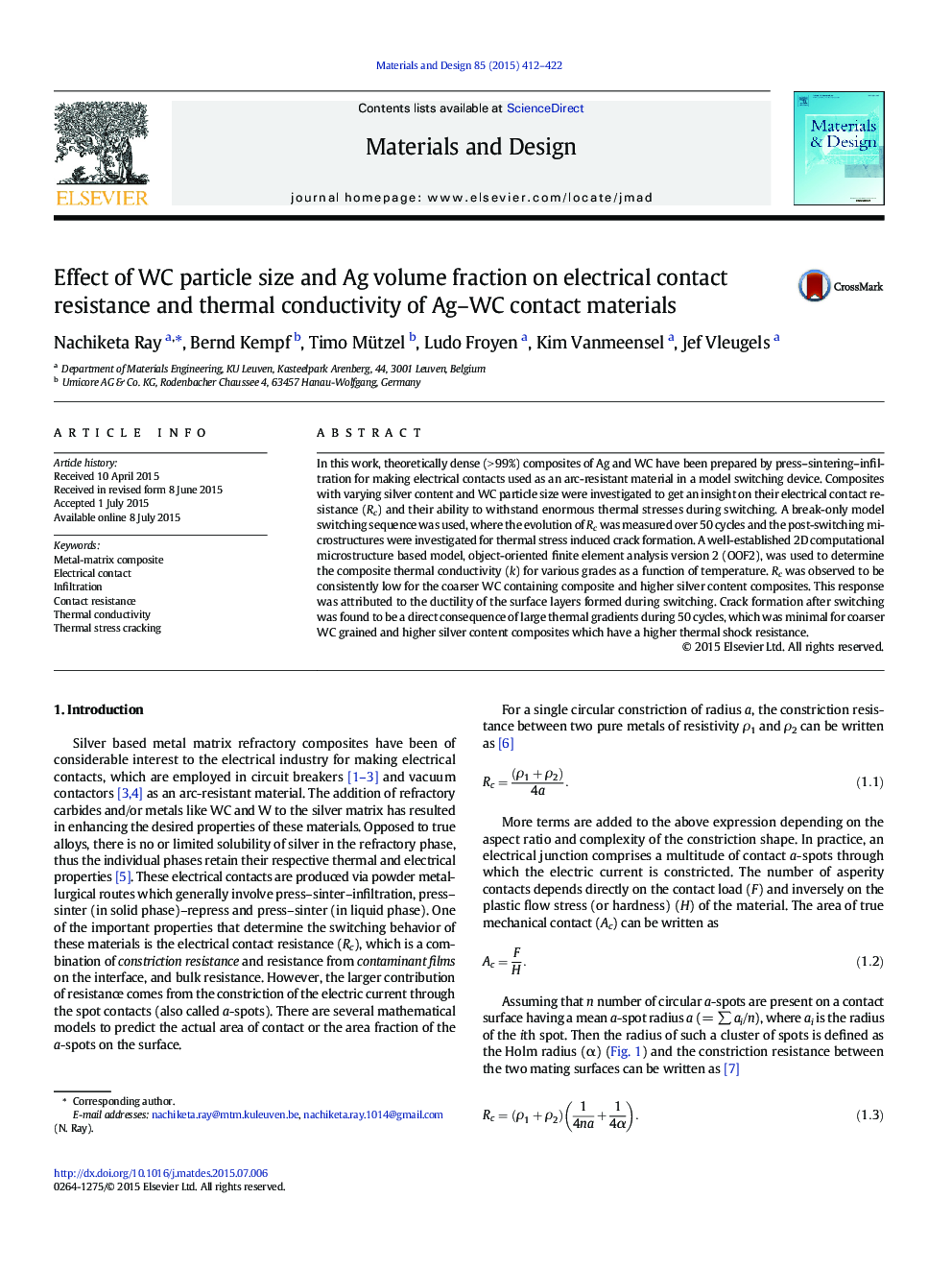| Article ID | Journal | Published Year | Pages | File Type |
|---|---|---|---|---|
| 828312 | Materials & Design | 2015 | 11 Pages |
•A break-only model switch was used to simulate a real circuit breaker.•The influence of Ag content and WC particle size on the electrical contact resistance of Ag-WC materials is established.•The composite thermal conductivity is calculated as a function of temperature using a 2D-microstructure based model.•The influence of microstructure on contact resistance, hardness and thermal conductivity of Ag-WC materials is assessed.
In this work, theoretically dense (> 99%) composites of Ag and WC have been prepared by press–sintering–infiltration for making electrical contacts used as an arc-resistant material in a model switching device. Composites with varying silver content and WC particle size were investigated to get an insight on their electrical contact resistance (Rc) and their ability to withstand enormous thermal stresses during switching. A break-only model switching sequence was used, where the evolution of Rc was measured over 50 cycles and the post-switching microstructures were investigated for thermal stress induced crack formation. A well-established 2D computational microstructure based model, object-oriented finite element analysis version 2 (OOF2), was used to determine the composite thermal conductivity (k) for various grades as a function of temperature. Rc was observed to be consistently low for the coarser WC containing composite and higher silver content composites. This response was attributed to the ductility of the surface layers formed during switching. Crack formation after switching was found to be a direct consequence of large thermal gradients during 50 cycles, which was minimal for coarser WC grained and higher silver content composites which have a higher thermal shock resistance.
Graphical abstractFigure optionsDownload full-size imageDownload as PowerPoint slide
